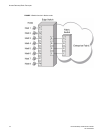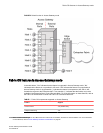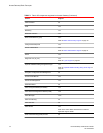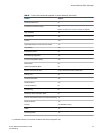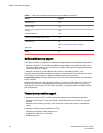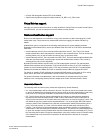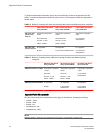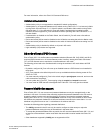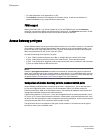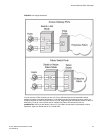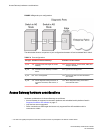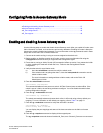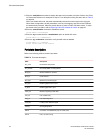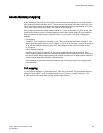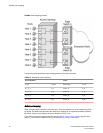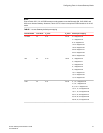
• VF mode distribution is not applicable to an AG.
• The distribute command is not supported in AG mode. Hence, an AG cannot distribute its
password database to any of the switches in native mode.
FDMI support
Starting with Fabric OS 7.3.0, AG can register its N_Port with FDMI devices, and the fdmishow
command is supported to display the device details in AG as well. The fdmishow command in an AG
will display only the local devices, and the remote device details are blocked.
Access Gateway port types
Access Gateway differs from a typical fabric switch because it is not a switch; instead, it is a mode that
you enable on a switch using the ag command. After a switch is set in Access Gateway mode, it can
connect to the fabric using node ports (N_Ports). Typically, fabric switches connect to the Enterprise
fabric using interswitch link (ISL) ports, such as E_Ports.
AG uses the following Fibre Channel (FC) ports:
• F_Port - Fabric port that connects a host, HBA, or storage device to a switch in AG mode.
• N_Port - Node port that connects a switch in AG mode to the F_Port of the fabric switch.
• D_Port - Port configured in diagnostic mode so that various tests can run between it and connected
D_Port on another switch or HBA across a link.
NOTE
Initiate the portcfgpersisentenable command on all external or outward facing ports to ensure that
these ports come back online after a switch reboot or power failure. For an embedded switch, execute
this command through the chassis management console and not the switch CLI or the command may
not persist. Refer to Persisting port online state on page 47 for more information.
Comparison of Access Gateway ports to standard switch ports
Access Gateway multiplexes host connections to the fabric. It presents an F_Port to the host and an
N_Port to an Edge fabric switch. Using N_Port ID Virtualization (NPIV), AG allows multiple FC
initiators to access the SAN on the same physical port. This reduces the hardware requirements and
management overhead of hosts to the SAN connections.
A fabric switch presents F_Ports (or FL_Ports) and storage devices to the host and presents E_Ports,
VE_Ports, or EX_Ports to other switches in the fabric. A fabric switch consumes SAN resources, such
as domain IDs, and participates in fabric management and zoning distribution. A fabric switch requires
more physical ports than AG to connect the same number of hosts.
The figure below shows a comparison of the types of ports a switch in AG mode uses to the type of
ports that a switch uses in standard mode.
FDMI support
24 Access Gateway Administrator's Guide
53-1003126-02



